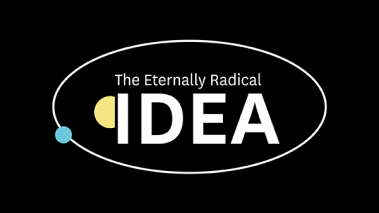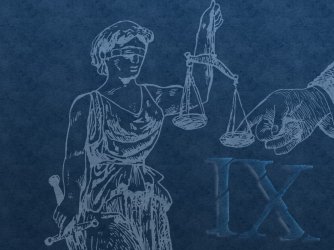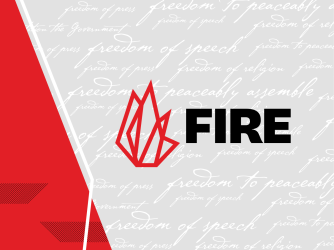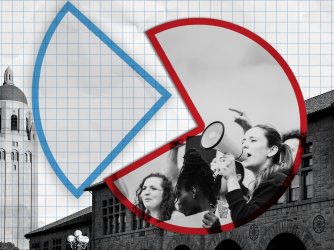Table of Contents
The Upside of Your Dark Side, Free Speech, and ‘Problems of Comfort’

This article appeared in The Huffington Post.
Before we leave the first month of 2015 I need to say, 2014 was a great year for mass market, non-narrative non-fiction (which I call, for simplicity’s sake, “popular non-fiction”). As I confessed last March, I am a huge booster of the genre, not as a guilty pleasure, but rather as a forum for America to have some of its most interesting intellectual discussions. I love it in large part because having to communicate to a mass audience disciplines the writer and makes it more difficult for them to hide behind the jargon and articles of faith of their academic field, while, at the same time, valuably exposing their ideas to criticism from the common sense perspectives of readers of wildly varied disciplines, backgrounds, and experiences.
This past year there were too many good reads to list, but some of my highlights include: The Second Machine Age by Erik Brynjolfsson and Andrew McAfee; Good Manners for Nice People Who Sometimes Say F*ck by Amy Alkon; Steven Pinker’s exceptionally useful The Sense of Style: The Thinking Person’s Guide to Writing in the 21st Century; and Think Like a Freak by Steven D. Levitt and Stephen J. Dubner, just to name a few.
But I’d especially like to recommend The Upside of Your Dark Side: Why Being Your Whole Self—Not Just Your “Good” Self—Drives Success and Fulfillment by Todd Kashdan and Robert Biswas-Diener. (It is, incidentally, the second 2014 book on my short list of recommended reading that starts with “the upside” in its title, the first being Megan McArdle’s great The Up Side of Down: Why Failing Well Is the Key to Success, which came out in early 2014). The Upside of Your Dark Side is a fascinating and important look into the value of “negative” emotions. The authors show how an increasing body of evidence indicates that unpleasant emotions, like anxiety, anger, guilt, and even boredom can confer certain advantages in different situations over simply striving to always maintain a mindful, happy state.
Like a lot of interesting research and popular non-fiction these days (I am thinking in particular of John Tierney and Roy F. Baumeister’s excellent Willpower), the book offers wisdom that your great-grandmother could have told you, but that our society somehow forgot, e.g.: guilt is your mind’s way of keeping you morally in line; anxiety can, in fact, be useful to keep you paying attention; and while anger might be unpleasant, sometimes you need it to motivate you to take action and to right wrongs.
But I’m also singling out The Upside of Your Dark Side because of three themes that overlap with my work, defending freedom of speech both on campus and as a philosophy in the larger world (which seems more urgent than ever given recent global events).
Striving for comfort at all times can be harmful to our happiness and our growth.
In the fall of 2014 I published a short book that was titled Freedom From Speech. The original title of the book, however, was the snoozer “Problems of Comfort.” (I thank my editor for steering me away from that initial title, but the theme, nonetheless, dominated the book.) Simply put, I believe that we can expect threats to freedom of speech to get worse as human beings are likely to expect not just greater physical comfort as time goes by, but greater “intellectual comfort” as well. That is, students increasingly not only feel that they have a “right not to be offended,” but rather have something more akin to a “right to be confirmed,” or at minimum, not disagreed with too harshly. This “expectation of confirmation,” I conclude, is intellectually unhealthy and a major threat to freedom of speech, as you can’t have serious discussions and at the same time have a blanket rule against saying anything that could make any listener uncomfortable. Important discussions are often inherently uncomfortable.
The authors of The Upside of Your Dark Side come to similar conclusions, believing that Americans suffer from “comfort addiction.” They trace Americans’ obsession with both physical and intellectual comfort back over the decades and see our fixation on comfort as something that prevents us from enjoying the benefits of our “full palette of emotions.” The authors advocate an approach to being “whole” that includes being able to hear what your instincts and emotions are telling you and being able to harness the special properties of different negative emotional states in order to improve your life. The authors cleverly describe some of these emotional states as “superpowers,” writing:
When you were a child, you probably pretended you possessed some kind of superpower (if you didn’t you missed out). Perhaps you imagined that you could fly, or were phenomenally strong, or were invulnerable. When you think about your emotions in light of the benefits associated with all feelings—positive and negative—you realize that you don’t just have one superpower, you have many. You possess a courage enhancer (anger), an unethical behavior derailer (guilt), and an alert sentinel standing watch over you (anxiety). [....] In the end, most prejudices against negative emotional experiences arise because people conflate extreme, overwhelming, problematic emotions with their more benign cousins. Guilt is not shame, anger is not rage, and anxiety is not panic. In each case, the former is a beneficial source of emotional information that focuses attention, thinking, and behavior toward a surprising number of effective outcomes.
This is an extremely interesting point, but, as a side note, I think campuses are teaching students to harness their anger to the point that the phrase “outraged college student” sounds redundant. For them, I should note that the authors find anger is useful only if utilized carefully, sincerely, and sparingly.
Uptightness probably will not set us free.
Another finding that grabbed my attention that also has implications for rationales for censorship on campus were studies relating to diversity initiatives and how these they can sometimes backfire. The authors talk about how different diversity initiatives can, in fact, cement stereotypes in peoples’ minds rather than diminish them, and how different approaches to talking to people across lines of racial or other difference can, in fact, promote distrust as people are “talking on eggshells” (a term I usually apply to campuses, where it’s shockingly easy to say the wrong thing).
Perhaps the creepiest example of a diversity initiative gone wrong that I have seen in my career took place at the University of Delaware in 2007. In this program, Delaware heavy-handedly tried to prescribe not only “correct” speech but specific “correct” beliefs. Interestingly, the book highlights evidence that people communicate better across lines of difference once they had been purposely exhausted:
In one study, scientists asked subjects to do something intellectually or physically challenging right before a potentially sensitive conversation with a member of another ethnic group. Freed from effortful attempts to say the right thing, mentally exhausted people ended up being less inhibited in a conversation about personal differences with someone of a different race and enjoyed the interaction 25.4 percent more. They were also viewed as less prejudiced by black observers who watched videotapes of the interaction. Finally, the tired, uninhibited participants were 72.6 percent more likely to candidly discuss diversity and how to effectively handle this sensitive issue.
What the study shows is there are real benefits to people engaging in genuine, unfiltered candor. But here it is worth noting another proposed title for my last book: “The War on Candor,” a metaphorical war I see all too often these days.
Campuses for most of my career have been signaling to students that you need a thorough college education to be able to effectively talk to people different than you. I’ve always rejected this. It’s elitist, for one, but further I find it classist in the same way the old Victorian censors were classist, seeming to think that the solution to “indecency” was for everyone to talk like the upper-class (or, more accurately, how the upper class likes to think it talks). It’s simply hard to imagine people communicating honestly and effectively with each other when there are so many rules—both overt and implicit—about what you can and can’t say.
Take the famous example of Juan Williams, who was fired by National Public Radio for admitting during a debate with Bill O’Reilly that he felt nervous getting on a plane when he saw Muslims in traditional garb getting on as well. Williams describes his remark in his 2011 book Muzzled:
This was not a bigoted statement or a policy position. It was not reasoned opinion. It was simply an honest statement of my fears after the terrorist attacks of 9/11 by radical Muslims who professed that killing Americans was part of their religious duty and would earn them the company of virgins in heaven. I don’t think that I’m the only American who feels this way.
He elaborates further on his ill-fated moment of candor in this video:
Another example of the dangers of candor came out of Syracuse University in 2012. Syracuse’s School of Education effectively expelled Matt Werenczak, an education student who complained on his own Facebook page about a comment that he thought was racially insulting.
So, while it seems obvious that candor is essential, campuses—and even society at large—too often do more to discourage it than promote it.
We claim to love creativity in theory, but not so much in practice.
The last interesting observation I will highlight from a book filled with so many interesting insights concerns studies about creativity and discomfort. The authors state, “To be open and receptive to creative ideas, we need to be open and receptive to discomfort.” This is well-established and at least nominally uncontroversial. I say nominally, however, because the authors point out that everyone knows to say that they value creativity, but psychological research indicates that people are far less comfortable with creativity in practice than they are in theory. The authors note “[o]rganizations desire creativity but often want it controllable.” I run into this problem all the time on campuses where administrators seem to be saying “think the unthinkable, challenge the unchallengeable, mention the unmentionable... but do it in a way that doesn’t upset anyone.”
One of the most powerful rationales for freedom of speech is its central role in shaping creative individuals, institutions, and societies. If you rigidly define what people can and can’t say, you either destroy the creative process or drive it underground. True, questioning our deepest values, arguing polarizing issues, or broaching taboo topics can make us uncomfortable, but as the authors note, “Hans Eysenck, one of the pioneers of intelligence and personality testing, was famous for saying that the only useful brainstorming sessions are ones that involve fierce criticism.”
But if we are relying on our universities to teach students the value of being able to tolerate emotional discomfort, many colleges have a long way to go. Take the recent and ongoing case at the University of Iowa, which continues to defend its censorship of provocative anti-racist art. The entire point of the display in question was to make students uncomfortable and to make them think, but that seems to be entirely lost on the student body and, for that matter, the president of the university. And forget about universities teaching students how to handle fierce criticism. They often demonstrate that universities themselves cannot handle it. Check out the ongoing saga of Hayden Barnes, expelled over a patently harmless photo collage; this classic case in which a professor landed in hot water for first quoting the space-bound, sci-fi western Firefly and then ridiculing the university for censoring him; or this comical case in which a student was charged with disruption and “conduct that causes or provokes a disturbance” for complaining about parking on campus:

There are some bright spots to note. Earlier this month, a committee at the University of Chicago, led by eminent First Amendment scholar Geoffrey Stone, released an excellent statement on academic freedom, which emphasized the importance of discomfort for real education: “[I]t is not the proper role of the University to attempt to shield individuals from ideas and opinions they find unwelcome, disagreeable, or even deeply offensive.”
The statement also included what is now my new favorite tribute to free speech in the academy, from former University of Chicago President Hanna Holborn Gray:
[E]ducation should not be intended to make people comfortable, it is meant to make them think. Universities should be expected to provide the conditions within which hard thought, and therefore strong disagreement, independent judgment, and the questioning of stubborn assumptions, can flourish in an environment of the greatest freedom.
So while I fear that a societal expectation of emotional and intellectual comfort will be a force to be reckoned with in the coming years, it’s nice to see that some educational institutions are pushing back. Giving in to the expectation of comfort is not only poison to meaningful education, but as The Upside of Your Dark Side points out, it may deny future generations the complex, exciting, and mysterious gifts of our shared humanity.
Recent Articles
FIRE’s award-winning Newsdesk covers the free speech news you need to stay informed.

BREAKING: New Title IX regulations undermine campus free speech and due process rights


Stanford president and provost cheer free expression in open letter to incoming class
